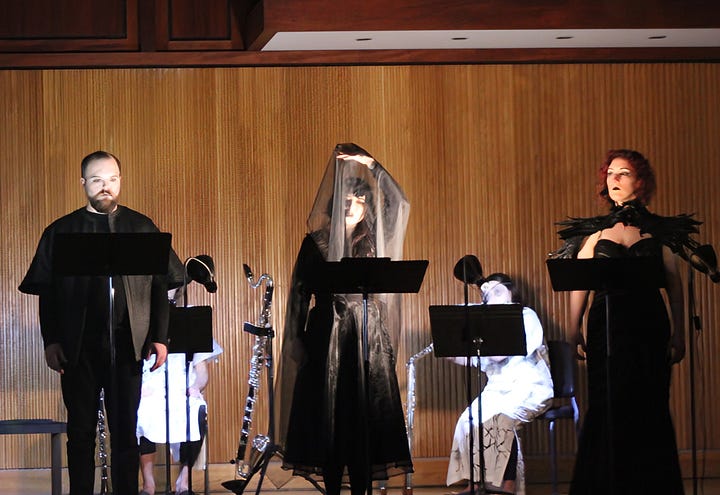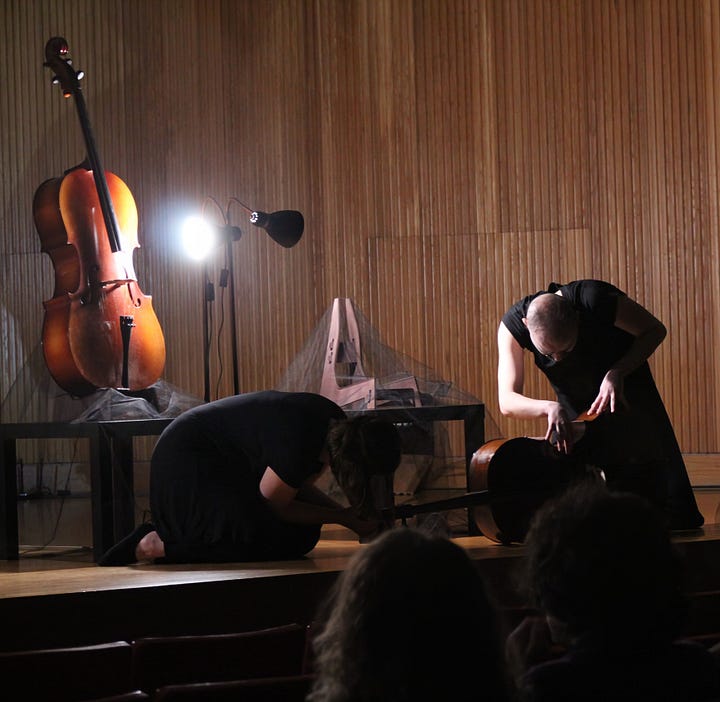

Experimental Music
Contemporary, experimental music developed from modernism and the avant-garde, questioning established aesthetic conventions; it can be profound and important.
For example, John Coltrane’s seminal A Love Supreme (1965) introduced modal harmony to jazz, changing it forever. In 1968, John Lennon and Yoko Ono’s Two Virgins brought the “tape loop” into popular music and contemporary Scottish band Mogwai has created a revolutionary “post-rock” sound.
Such experiments are often little appreciated in their own time; Igor Stravinsky’s “Rite of Spring” (1913), generally regarded as “one of the greatest creative leaps in not only the history of music, but in the history of the arts," famously created a riot of angry audience members at its Paris premiere.
Experimental opera is often a multi-media experience, featuring dance and electronic mixed media and can be about anything; such as Leslie Snapper’s underwater opera You Will Emerge From the Flood (2009), or Leslie Dill and Ri…
Keep reading with a 7-day free trial
Subscribe to Media Room - The Arts in Real Life to keep reading this post and get 7 days of free access to the full post archives.



